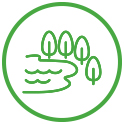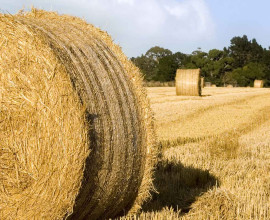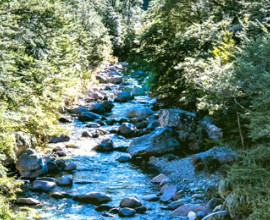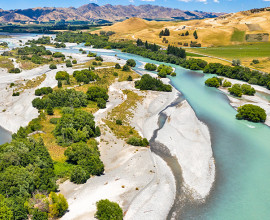Environmental limits
Canterbury Water Management Strategy (CWMS) goals in this target area relate to the review of environmental flows and catchment load limits, and the implementation of a programme to review existing consents, where needed, to achieve catchment load limits.
Environmental flows are the quantity, timing and quality of water flows required to sustain freshwater and estuarine ecosystems and the biodiversity, natural character, recreation and cultural values of these environments.
Catchment load limits are the amount of nutrients that can be used within a catchment without threatening ecosystem health, drinking water, biodiversity, and cultural and recreational values.
Under the CWMS, goals were set to help make a difference to our environment and how natural resources are managed. Environment Canterbury reports on progress on behalf of CWMS partners. Here's how things are progressing against 2020 goals.
Environmental flows and catchment load limits
2020 goal: Review environmental flows and catchment load limits in response to changing monitoring information, new understanding and technologies, and if requested by regional and zone committees.
Has this goal been met?
Water levels and river flows and water quality are monitored monthly and include over 90 recreational sites, and water zone committees are regularly updated with this information.
Because nitrate from previous farming practices can take years to travel through our groundwater, we do not expect to see clear improvements in groundwater quality for at least another 15 to 20 years. Therefore, we have not received any new information that would allow us to review catchment load limits.
2020 goal: Established and begun to implement a programme to review existing consents where such review is necessary in order to achieve catchment load limits.
Has this goal been met?
Specific catchment load limits have been, or are being, set in sub-regional plans. Environment Canterbury continues to monitor and model catchment loads and work through zone committees to determine whether consent reviews are necessary to achieve catchment load limits. A consent review is in process for the Hakatere / Ashburton River catchment.
- Implementing Plan Change 4, which introduced new policies and rules into the region-wide section of the Land and Water Regional Plan (LWRP), including new provisions that relate to improving biodiversity outcomes.
- Implementing Plan Change 5, which required farmers to reduce nutrient losses and manage land in an environmentally sustainable way.
- Implementing Plan Change 6, which focused on improving the health of Te Roto o Wairewa / Lake Forsyth, introducing new policies and rules to manage the quality and quantity of water in the catchment.
- Proposed Plan Change 7 (decision to be made) would focus on further reductions beyond Good Management Practice (GMP) and improving minimum flows in the Orari-Temuka-Opihi-Pareora (OTOP) and the Waimakariri Zones.
- A consent review on the Hakatere / Ashburton River catchment is being undertaken by Environment Canterbury. This review is designed to implement the minimum flows which were developed with the Ashburton Zone Committee and the community to protect the waterway's values and to ensure there is a reliable source of water for the environment, community and consent holders.
- Environment Canterbury continues to analyse the new requirements and provide updates on the Essential Freshwater package.




